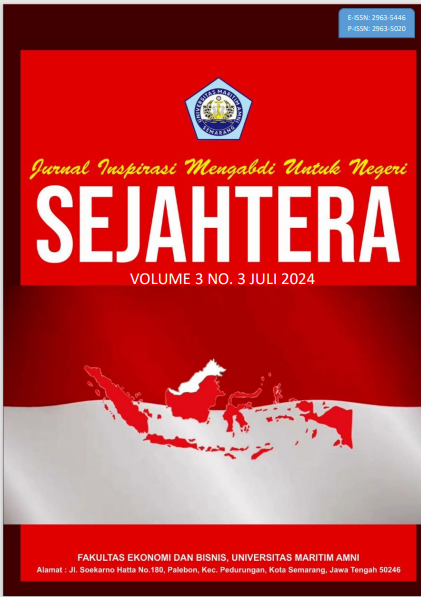Strengthening Rural Communities with Smart Village Approaches: A Case Study of Teratak Village
DOI:
https://doi.org/10.58192/sejahtera.v4i1.3016Keywords:
Descriptive Research, Teratak Village, Smart VillageAbstract
A smart village is a modern development effort to overcome problems. A bright town is a principle that includes concept development and technology implementation. This principle helps villages overcome issues that occur in villages, such as environmental problems, sanitation, environmental pollution, infrastructure, technological backwardness, and others. For this reason, this final report discusses the implementation of smart villages in Teratak Village, Muara Kaman District, Kutai Kartanegara Regency. Research for Smart Village activities uses descriptive research methods consisting of activity targets, strategies, and implementation. The target of community service and Smart Village activities is, of course, the entire community of Teratak Village. All activities in the Smart Village are carried out in collaboration with officials, village officials, village organizations, and school residents, not forgetting the Teratak Village community. As for its implementation, Smart Village uses several different methods. Smart Village is an activity that consists of six main programs where the programs are grouped into superior group work programs, namely making directional signs, healthy living education, planting TOGA (Family Medicinal Plants), reactivation of social media accounts, activation of posyandu and dengue fever education. , and waste collection activities. Apart from that, there are also seven other work programs, namely socialization of TOGA planting, making village maps, digital literacy education, developing village profile websites, socializing the importance of fish in children's growth and development, stunting education, and socializing the use of waste with eco-bricks.
References
Hadian, N., & Susanto, T. D. (2022). Pengembangan Model Smart Village Indonesia: Systematic Literature Review. Journal of Information System,Graphics, Hospitality and Technology, 4(2), 77–85. https://doi.org/10.37823/insight.v4i2.234
Premana, A., Sucipto, H., & Widiantoro, A. (2022). Pengembangan Desa Berbasis Smart Village (Studi Smart Governance pada Pelayanan Prima Desa Tegalreja). JILPI: Jurnal Ilmiah …, 1(1), 43–54. https://journal.insankreasimedia.ac.id/index.php/JILPI
Subekti, T., & Damayanti, R. (2019). Penerapan Model Smart Village dalam Pengembangan Desa Wisata: Studi pada Desa Wisata Boon Pring Sanankerto Turen Kabupaten Malang. Journal of Public Administration and Local Governance, 3(1), 18. https://doi.org/10.31002/jpalg.v3i1.1358
Thabroni, G. (2022). Metode Penelitian Deskriptif Kualitatif (Konsep & Contoh). Serupa.Id. https://serupa.id/metode-penelitian-deskriptif-kualitatif-konsep-contoh/
Downloads
Published
How to Cite
Issue
Section
License
Copyright (c) 2025 Suhardi Suhardi, Dede Aprylasari, Ari Wibowo, Atika Nabila

This work is licensed under a Creative Commons Attribution-ShareAlike 4.0 International License.






